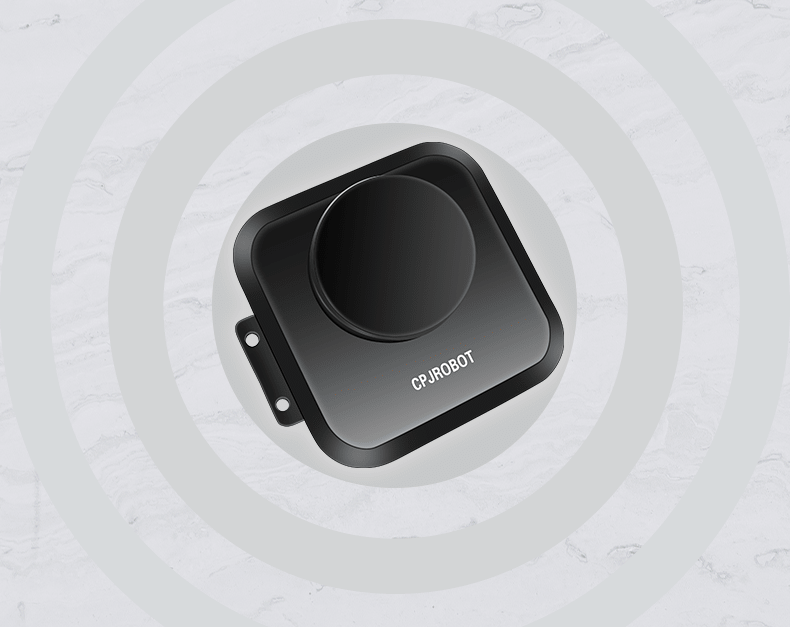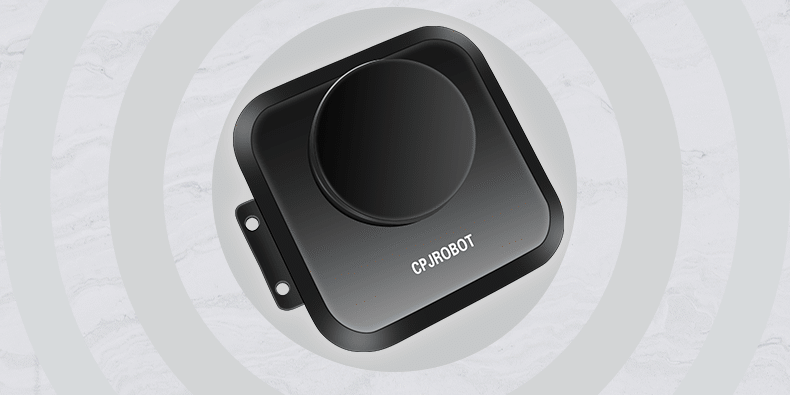Introduction
Selecting the right LiDAR sensor for an interactive wall, projection system, or autonomous robot requires understanding two critical parameters: sampling rate and detection range. These factors determine the sensor’s accuracy, response speed, and adaptability across various application environments.
This guide explains what these parameters mean, how they affect performance, and how to select the optimal configuration for your project.

1. Understanding the LiDAR Sampling Rate
What Is Sampling Rate?
The sampling rate defines how many distance points a LiDAR sensor captures per unit of time. In simple terms, it represents how frequently the sensor “reads” the environment.
A higher sampling rate produces denser data, leading to more precise measurements, smoother motion detection, and better target tracking.
High Sampling Rate Benefits
- Improved precision: The more samples taken, the more accurate the spatial mapping.
- Reduced missed detections: High-frequency sampling ensures that fast-moving targets are not skipped.
- Higher resolution: Enables the system to detect smaller details or thin objects.
Typical high-frequency LiDAR sensors operate from hundreds of kHz to several MHz, making them suitable for real-time interaction and rapid movement tracking.
Balancing Sampling Rate and Scan Speed
While a higher sampling rate increases precision, it also affects:
- Scan frequency: Too high a scan speed may lower angular resolution.
- System load: Faster sampling generates larger data volumes, requiring stronger processors.
For interactive wall systems, a balanced sampling rate ensures responsive yet stable performance without overloading the system.
Dynamic Scene Considerations
In dynamic environments (e.g., gaming, motion tracking, or interactive walls), a higher sampling rate is essential for:
- Real-time gesture recognition
- Multi-user tracking
- Smoother, delay-free visual feedback
2. Understanding LiDAR Detection Range
What Is Detection Range?
The detection range defines how far the LiDAR sensor can accurately measure objects. Manufacturers usually specify this distance based on a 90% reflectivity white surface.
However, real-world conditions—such as surface color, material, and ambient lighting—can drastically alter actual range performance.
Factors Affecting Detection Range
- Target Reflectivity:
Dark or low-reflective surfaces significantly reduce detection distance—sometimes by half compared to white surfaces. - Light Power and Algorithms:
Stronger laser power and advanced signal-processing algorithms improve detection over long distances. - Environmental Light:
Sunlight or bright ambient conditions may introduce noise and reduce the effective range.
Typical Detection Distances
For indoor LiDAR interactive walls, a detection range between 3–20 meters is generally sufficient to:
- Cover large wall surfaces
- Recognize human gestures and movements accurately
- Maintain reliable performance under varying lighting conditions
3. How to Choose the Right LiDAR Sensor
Step 1: Define Your Application Needs
Start by identifying:
- Maximum distance the system must detect
- Object reflectivity (light vs. dark materials)
- Indoor or outdoor environment
For example, indoor museum walls may only need 5–10 meters, while outdoor installations require up to 50–100 meters.
Step 2: Match Sampling Rate to Motion Speed
If the target or users move quickly (e.g., interactive games), use higher sampling rates to ensure smooth and accurate tracking.
For static or slow-moving installations, moderate sampling rates suffice and reduce processing costs.
Step 3: Consider Environmental Interference
LiDAR sensors should have:
- Strong sunlight resistance for outdoor use
- Adaptive signal filtering to handle reflective or transparent surfaces
- Robust anti-noise capabilities in complex lighting environments
Step 4: Balance Performance and Cost
Higher sampling rates and longer detection ranges come at a cost.
Choose based on actual needs to avoid overspending while maintaining performance reliability.
Always refer to the manufacturer’s field test reports and certifications for real-world data.
4. CPJ ROBOT’s POE Interactive LiDAR Solutions
CPJ ROBOT specializes in POE-based LiDAR sensors designed for interactive walls, floor projections, and robotic navigation.
Our LiDAR systems feature:
- Adjustable sampling rates for real-time performance
- High-precision detection up to 100 meters
- Plug-and-play POE interface for easy integration
- Free calibration software for developers
These solutions are ideal for museums, exhibitions, retail displays, and smart entertainment venues that demand stable, touchless multi-point interaction.
5. Frequently Asked Questions (FAQ)
Q1: How does sampling rate affect interactive wall performance?
A1: Higher sampling rates enable smoother motion detection and more accurate tracking of fast-moving gestures, improving user experience and system responsiveness.
Q2: Why does detection range vary in real-world conditions?
A2: Real detection range depends on the object’s reflectivity, color, and environmental lighting. Dark or shiny surfaces reduce effective range.
Q3: Can one LiDAR sensor cover an entire wall?
A3: It depends on wall size and sensor model. Large walls may require multiple LiDAR sensors with overlapping coverage for full detection accuracy.
Q4: How do I select LiDAR for outdoor installations?
A4: Choose LiDAR with strong anti-glare capability, IP-rated waterproof housing, and long-range detection suited for sunlight environments.
Q5: Does CPJ ROBOT provide software for testing and calibration?
A5: Yes. CPJ ROBOT offers free testing and calibration software for developers to integrate and fine-tune LiDAR data in real time.
Conclusion
Choosing the right LiDAR sensor sampling rate and detection range is key to ensuring precise and reliable interaction.
Balancing these parameters according to your project’s motion speed, environmental conditions, and budget will ensure smooth performance and long-term stability.
Ready to upgrade your interactive wall or robot with precision LiDAR sensing?
Partner with CPJ ROBOT — your trusted expert in POE interactive LiDAR and custom reception/navigation robot solutions.







